A heavy perfume of rotting mango, frying pig intestines and body oder hung in the 98% humidity. It was completely unbearable for Hunter who was still recovering from a bad Burmese curry the day before. We’re still not clear whether it was this stench or the stickiness that hit us first, but it was a combination that could only represent the city of Yangon.
Yangon is a city caught in the middle. The impressive English speaking students, impending election and increasing number of bookshops show an intellectual persuasion ready to carry the people into the 21st century. Unfortunately, the city doesn’t seem ready to support it. It’s hard to believe that the crumbling infrastructure is reality for a city of over 5 million. We were completely unprepared for what we saw in Yangon, and our sightseeing began with an 1 hour+ long taxi from the airport to our hotel. Despite it being mid-day, traffic inched along Yangon’s main thoroughfair. Unbeknownst to us, the rows of apartments that towered over each each block were an accurate representation of the city itself. Gorgeous colonial buildings, remnants from British occupation, crumbled in squalor in every direction. Trash clogged gutters, stairways and alleyways. The street food vendors made even the most questionable vendors of Bangkok look FDA approved.
In need of nourishment after being served shelf stable mystery meat-in-a-blanket on our flight, we braved the mess of motorbikes and downed power lines for the first time. Food poisoning or not, we needed to sample the local cuisine and headed for Shan Noodles. After devouring steaming bowls of spicy, pork-topped noodles and peppery broth, then washing them down with creamy avocado juice, we were ready to explore.
We took reprieve from the muggy streets a few hours later in the bar of the 5-star Strand Hotel. Unfortunately, sipping on Sours while kicked-back in leather chairs did not numb our culture shock in the way that we had hoped. Instead, we reminded ourselves that we travel for knowledge, not for comfort and channeled our discomfort into curiosity. This was traveling, and we were reminded of that with the adventure the next morning’s sunrise would bring.
As day broke over Yangon’s Thiri Mingalar market, I’m not sure how Hunter’s stomach survived the curious odors wafting through the air. Brown slop swallowed our sandaled feet and we stood gaping until a wrinkled woman in a swerving tuktuk forced us to leap out of the way and into the market.
The filth was unlike anything we’d seen and the stench was riper. But the people were some of the happiest and authentic we’d met. Individually, the market offerings were grim. What was impressive, however, was the mass in which these products were gathered. Bruised fruits and rancid meats stretched as far as the eye could see. In a dark corner of a warehouse, we even discovered a mountain of green chilis — 8 yards square piled at least 1.5 yards high — complete with a rooster taking his morning stroll across the top. Young monks padded barefoot through the muck, nuns picked through the produce, and goats grazed on everything left behind. A man sold instant coffee and tea from a folding table — Thiri Mingalar’s own Starbucks.
Later in the day, we sampled more of Yangon’s “coffee culture”, sitting down for a cuppa at the local tea shop. We swung ourselves onto wooden benches and gazed out the open-faced store front. With the temperature (and humidity) at 100 degrees, it was a steamy, yet perfect, people watching location. A mere 90 cents bought a cup of traditional Myanmar tea, a full pot of Jasmine tea and a traditional teahouse treat of 2 shrimp wontons. Hunter and his stomach however, opted for the tourist menu — a chilled sprite and a bottle of water, costing an astronomical $2.50. There’s much to write home about Myanmar food, and the affordability is certainly part of the appeal.
We saved the best of Yangon for last, so just before sunset, we began our half hour walk to Shwedagon, Myanmar’s most revered pagoda. As a 6-lane roundabout whirled in front of us, we realized that our decision to walk to the Pagoda was also our consent to a real-life game of frogger. Fortunately, luck was on our side. We removed our shoes, tied our longyes (with help from friendly locals), and were completely amazed by the size and splendor of the pagoda. The gilded complex couldn’t have been more opposite to the chaos of Yangon. Near soothing in its stillness, incense wafted through the air and our bare feet glided across polished marble. The pagoda gleamed above a sea of other golden spires, plated with 22,000 gold bricks. As day peacefully slipped into dusk, we left the calm behind and turned back to the now dark streets. Through night markets, trash heaps and dark alleys, we trekked to a “rooftop” bar. From the fifth floor, we towered over the city and clinked our beers to the showstopping view.
While most might have called it a night, we had one more activity to check off our Yangon to-do list. Despite it being 10pm on a Monday, the streets of Chinatown were crawling with hungry, young Burmese patrons participating in the nightly tradition of BBQ food after dark. Food carts lined both sides of the street but instead of offering their typical deep fried doughs and noodle bowls, they were stacked with skewers. Pork belly, squid, mushrooms, tofu, chicken, and even whole fish were laid on ice awaiting the hot charcoal embers. We gestured helplessly, and before we knew it, a spread of cold beer and hot barbecue was laid out before us. A feast — eaten from plastic stools in the middle of a mob-scene in a dark, dirty street.
And that’s how it went in Yangon. A constant, often challenging, hunt for the hidden cultural gems. The contrast of a progressive yet crumbling, glamorous yet garbage ridden city proved a rich landscape for cultural exploration. We took away knowledge, new friends and full bellies. But we were happy to leave the smell behind.















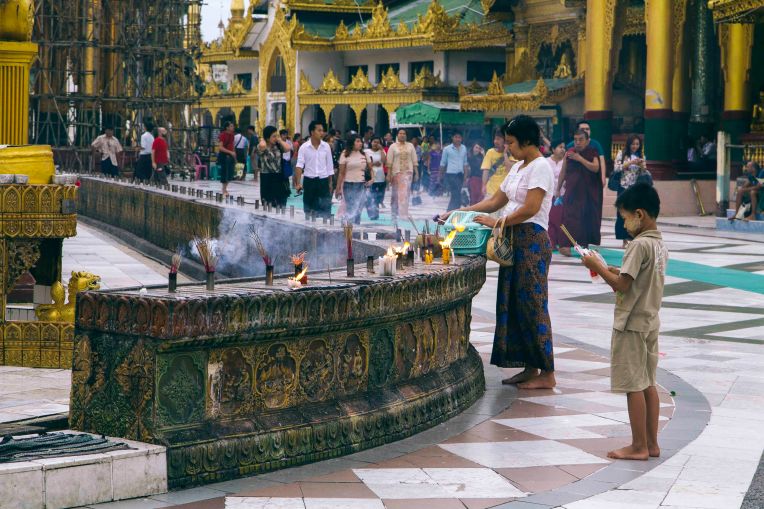





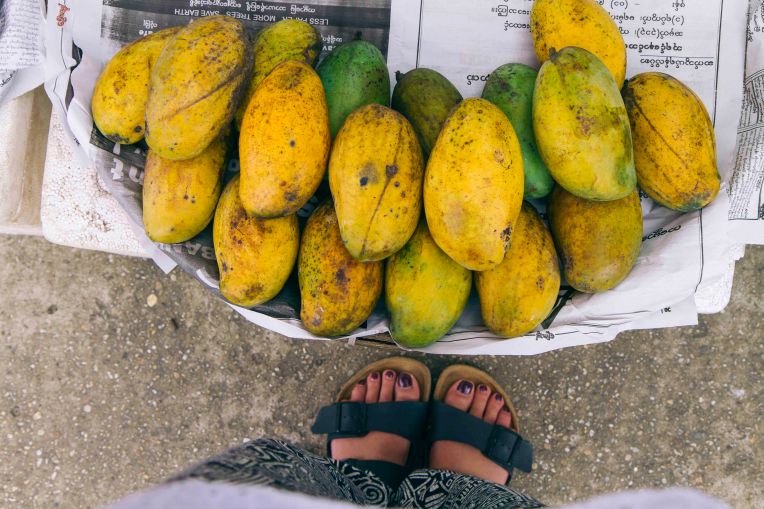
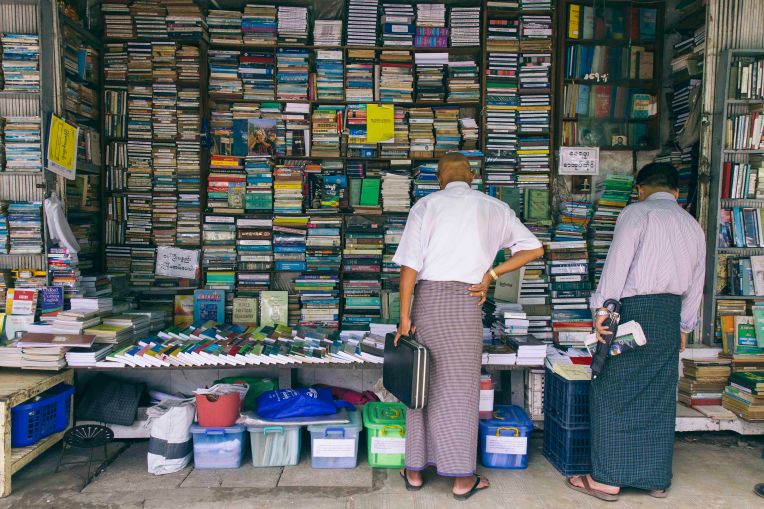
















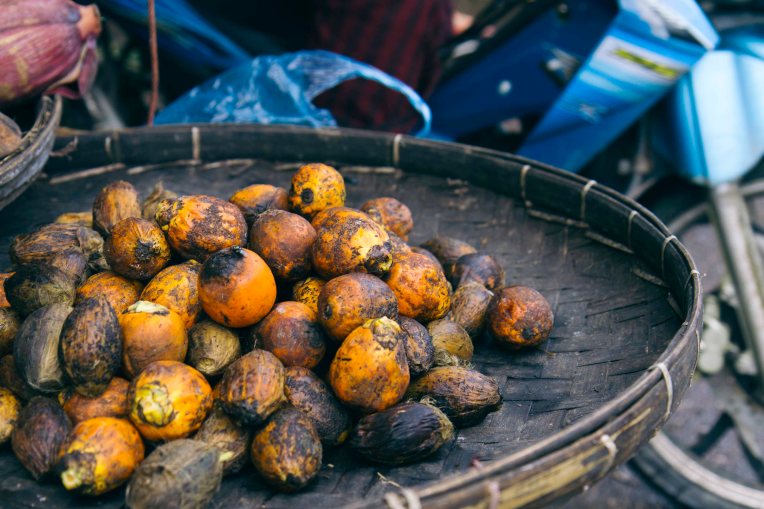


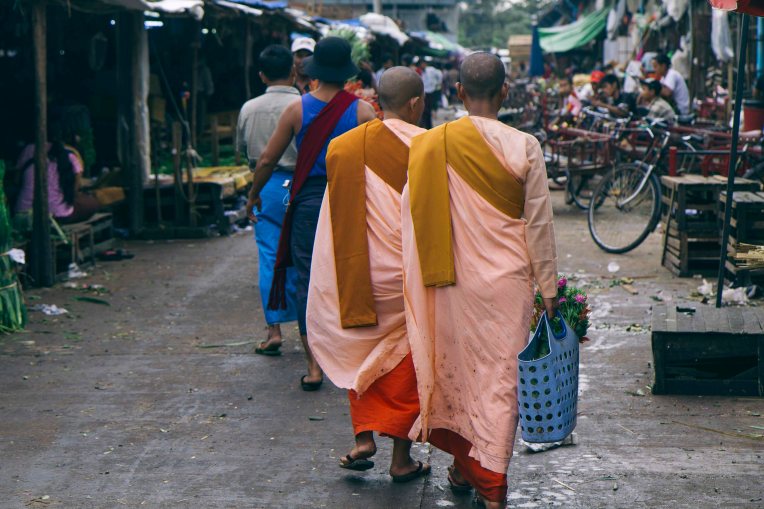













You write beautifully. I could almost smell the bad odors and see the trash piled up in the alleys, the rotting fruit and the rancid meat at the markets. Your description of your time in Rangon, a place most of us will never have an opportunity to visit, was extremely interesting. Thank you for including me on your contact list.
I’m not sure it’s a good thing that you’re so close to smelling those smells 🙂 I hope you do have the opportunity to visit at some point!